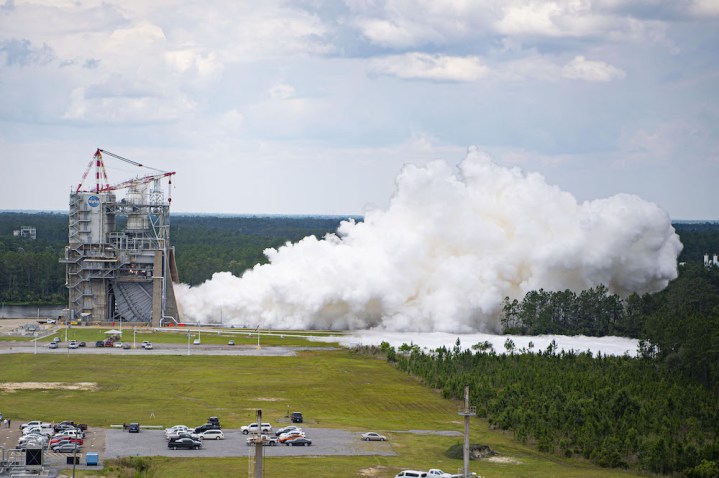
NASA is performing hot fire tests of the new RS-25 engines that will power the agency’s Space Launch System (SLS) rocket toward the moon in the Artemis V mission, currently scheduled for 2029.
“NASA entered the stretch run of a key RS-25 certification engine test series with a successful hot fire [on] June 1, continuing to set the stage for future Artemis missions to the moon,” the agency said in a post on its website.
As the term suggests, hot fire tests involve firing up the engine to check its performance. Engineers recently completed the ninth in a series of 12 tests using the Fred Haise Test Stand at NASA’s Stennis Space Center near Bay St. Louis, Mississippi. The remaining three tests are expected to be completed by the end of this month.
In the latest test, operators powered the RS-25 engine for more than eight minutes (500 seconds), equal to the amount of time required to launch into orbit the SLS rocket and a crewed Orion spacecraft.

The first four Artemis missions — the first of which launched in November to test NASA’s SLS rocket and Orion spacecraft in a flight around the moon — are using refurbished S-25 engines that flew the Space Shuttle until the program was decommissioned in 2011.
NASA is collaborating with commercial and international partners to build a long-term presence on the lunar surface as part of efforts to develop the technologies and capabilities needed to send humans to Mars in an ambitious mission that could take place in the late 2030s.
Before that, NASA plans to send its first Artemis crew on a flyby of the moon in November 2024, followed by the first crewed landing in five decades as part of the Artemis III mission, currently slated for 2025. Artemis IV will also involve the delivery of the International Habitation Module (I-HAB) to the moon-orbiting Lunar Gateway, and also a crewed moon landing, while Artemis V, powered into orbit by the new RS-25 engines, will deliver the Lunar Terrain Vehicle — or lunar rover — to the moon’s surface along with a crewed landing.


